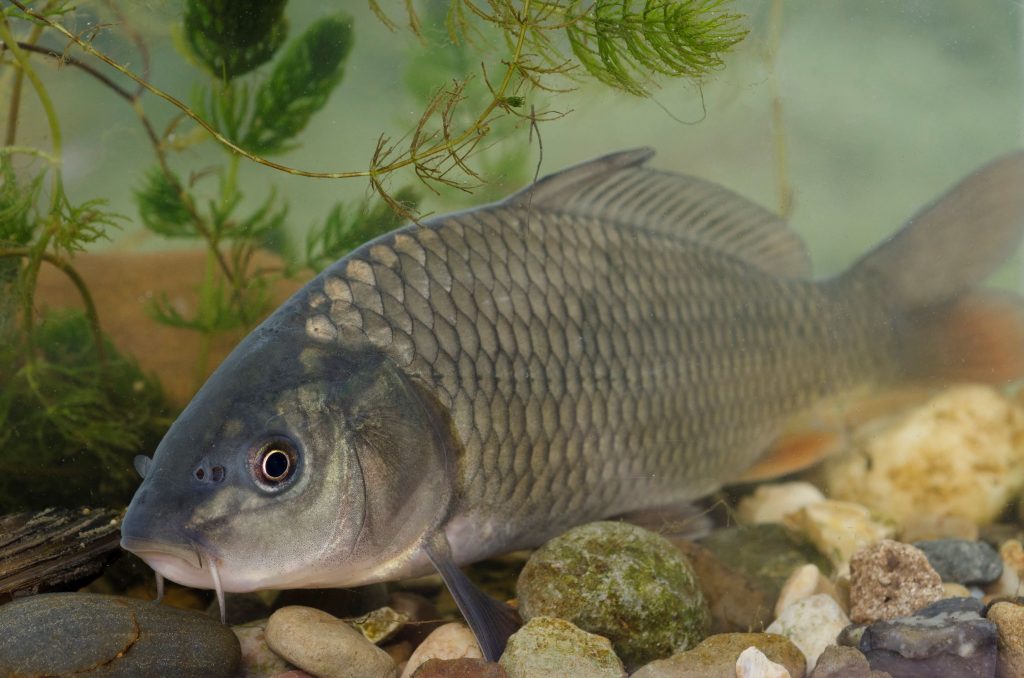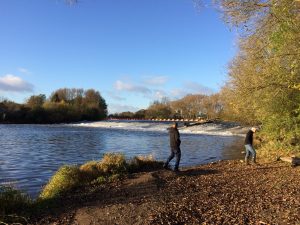Characteristics
Common carp are the most common member of the carp family. They are typically gold/brown in colour with chestnut brown fins and large scales. Like bream they have a protractile mouth but have thicker, more rubbery lips. In their wild form they are typically lean, cylindrical and powerful and an elongated oval shape. In privately owned lakes and ponds where food is abundant they can grow a much deeper oval shape. Mirror carp and leather carp are the same species, and are similar in appearance to common carp but are a result of breeding over centuries to produce large, tasty fish with very few scales making it easier for humans to eat and less work for the kitchen staff. Carp typically grow to around 60cms but with ample space, food and time they’re capable of growing to lengths of well over 1 metre. The British Record weight for a carp currently stands at 64lb 6oz (29.2kgs)!
Diet
Although suited to bottom feeding, carp can also be seen feeding in the surface areas on warm days. They are omnivorous and will feed on a variety of invertebrates and plant-based food. Small carp tend to be greedy and easy to catch on rod and line, but large species are clever. Anglers have found these animals to be very choosy where food is in abundance and there are now specially manufactured fruity baits (called boilies) on the market that can attract these picky fish to bite. Carp are powerful and can grow very large, therefore are rarely predated by anything other than otter or mink.




